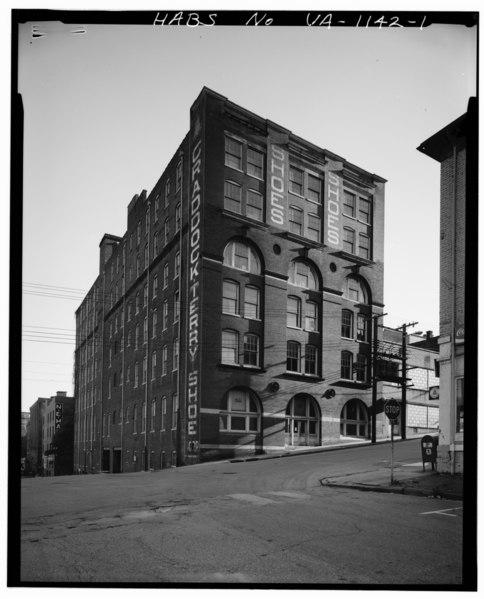The family history of most people is made of hundreds of census records. Therefore, finding people in a census is an essential fundamental skill. Which is why it can be a little embarrassing when it proves to be difficult. It's not like I've done this 84,000 times...
 |
| WHY CAN'T I FIND YOU?! |
But that's the thing about genealogy. Even when something is a fundamental skill doesn't mean you ever stop learning how to do it better. There are some of us that like to call ourselves experienced, but we're all still improving the same basic skills.
Defining the Problem
This round of census trouble is with my 2x great grandfather Pomp Fenity. You may recall that I did a
video about him and his wife Annie on my Youtube channel. In 1924 he lost his wife to measles, and before long he lost his farm and his family to the Great Depression. His children were sent to friends, relatives, and jobs outside of Virginia, and he spent the next several years working for the Works Progress Administration.
What this translates into for me is no longer looking for a single family unit, but him and his surviving children scattered to the wind. I still have no idea where my great grandmother was during the Great Depression, or her father Pomp. But I have most of the siblings now, and just filled in one more piece of the puzzle for missing 1930 and 1940 census appearances.
Where was Pomp in 1940?
Living as a lodger in the Pigg River District of Pittsylvania County, Virginia.
 |
| 1940 U.S. census, Pittsylvania County, Virginia, population schedule, Pigg River, enumeration district (ED) 72-31, sheet 8-B, household 124, "Pomp Finnety"; digital image, Ancestry.com (http://www.ancestry.com : accessed 17 Novamber 2014); citing NARA microfilm publication T627, roll 4284. |
What exactly was my error that kept me from finding this record sooner? The variation of his surname spelling isn't new, and I've seen more obtuse variations than this one. His age is also off by 10 years, which is a much larger range than I am accustomed to searching.
But my crucial error was one of insanity. I was searching over and over again with the same one website, finding nothing, and somehow expecting different results each time I tried. I was relying entirely on Ancestry.com to either find the record for me in shaky leaf hints, or to find it by playing around with enough sliders in their search field.
By the time I provided enough search parameters to weed out thousands of records irrelevant to me, I also weeded out the one thing I was trying to find.
Using HeritageQuest
The first time I tried something different was when the breakthrough happened, and it was with a website I think no one doing US research should ever overlook.
When I get into a census record jam, I like to use HeritageQuest. It's a website that is free to most Americans through their local state library system. Some of them even have remote access pages where you can log in with your library card number on your home computer.
Why do I use it when I have subscriptions to fancy sites like Ancestry.com and MyHeritage? Because its census search feature is simple, exhaustive, and the results are still relevant. It's a balance that I've never seen in another website, and I wish more of them would learn something from what HeritageQuest is doing so well.
By typing in Given and/or Surname, census year, and a state, I can see every instance of my search term in that state, broken down by county. I can start with the county where I'm accustomed to finding my ancestor, and see all the occurrences of his name. If I don't find him there, I can quickly change to a different county, or even to the whole state.
It places all of the results in an alphabetical list by Surname, but I can change it to sort by all of the options displayed in the drop-down list. So if I want to check possible name variants, I can sort by name. For people with common names, it's helpful to sort by age and narrow your results that way. Birthplace can also be an important filter.
Jargon on the Census
Overlooking information on any record is an excellent way to cheat yourself out of important information. I talked about this in my most recent video on
Deciphering Jargon, and the same ideas apply to census records as well. Never pass over numbers, codes, or abbreviations. They can provide an impressive amount of important information.
A great census tool I discovered recently for decoding this type of information was created by Steve Morse. There are several
series of codes on the 1910-1940 censuses, and you can look them up with their series of drop-down menus. The employment code ended up being useful to me because 988 V9 2 is for someone working in construction who is paid by the government. It was a useful confirmation that he was still a part of the WPA, without requesting his (very expensive) file from the National Archives.
Those codes can be an excellent way of determining who the informant was for the information as well. Pomp's education code on the 1940 census was "90" which means his education level is unknown and he's over the age of 6. Because I know he was literate enough to read and write, I know he attended school. Therefore, if the information is unknown it was because he wasn't the one providing it.
What dead ends have you had searching through the census? What are some of your favorite tools to work through census records?























